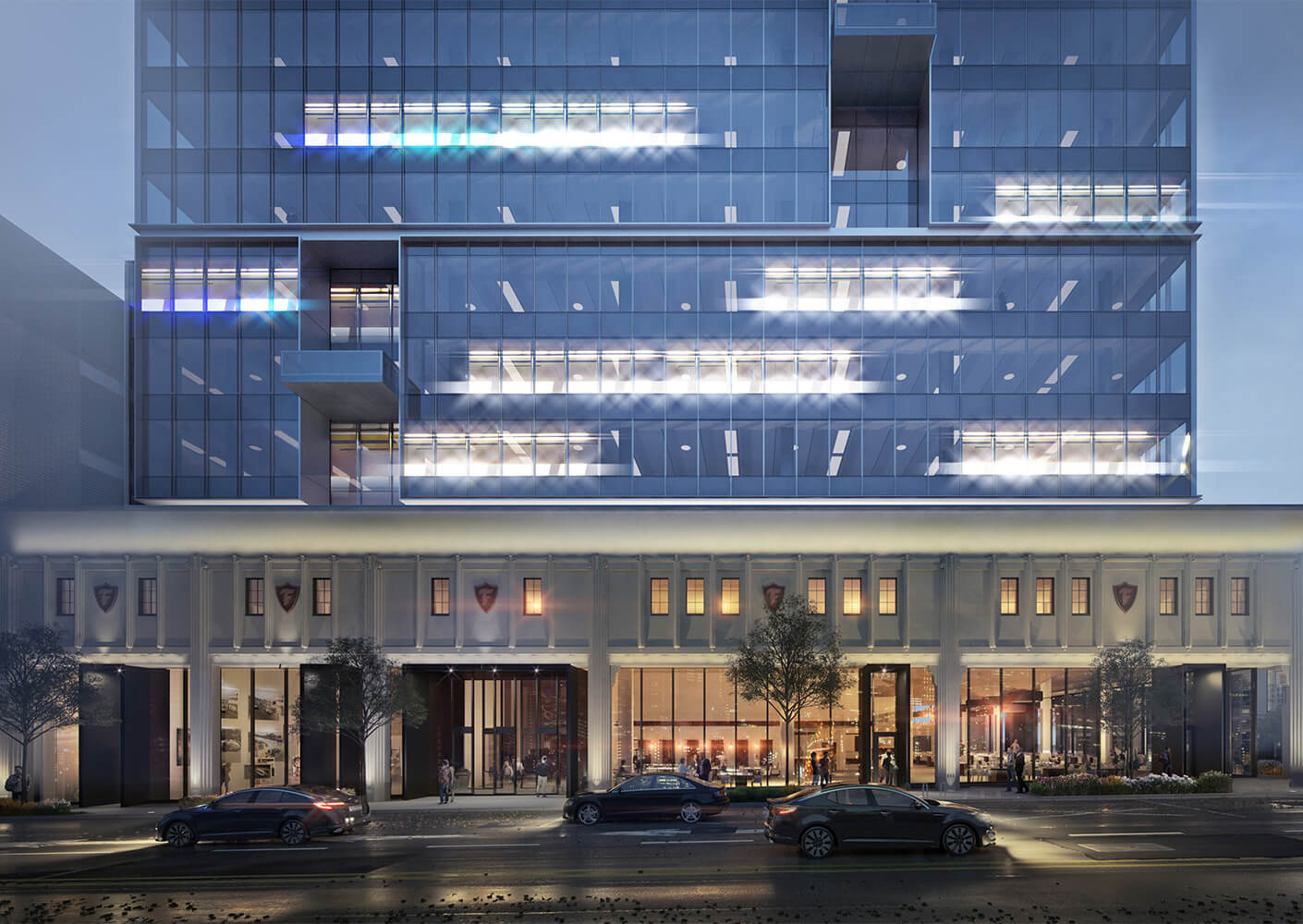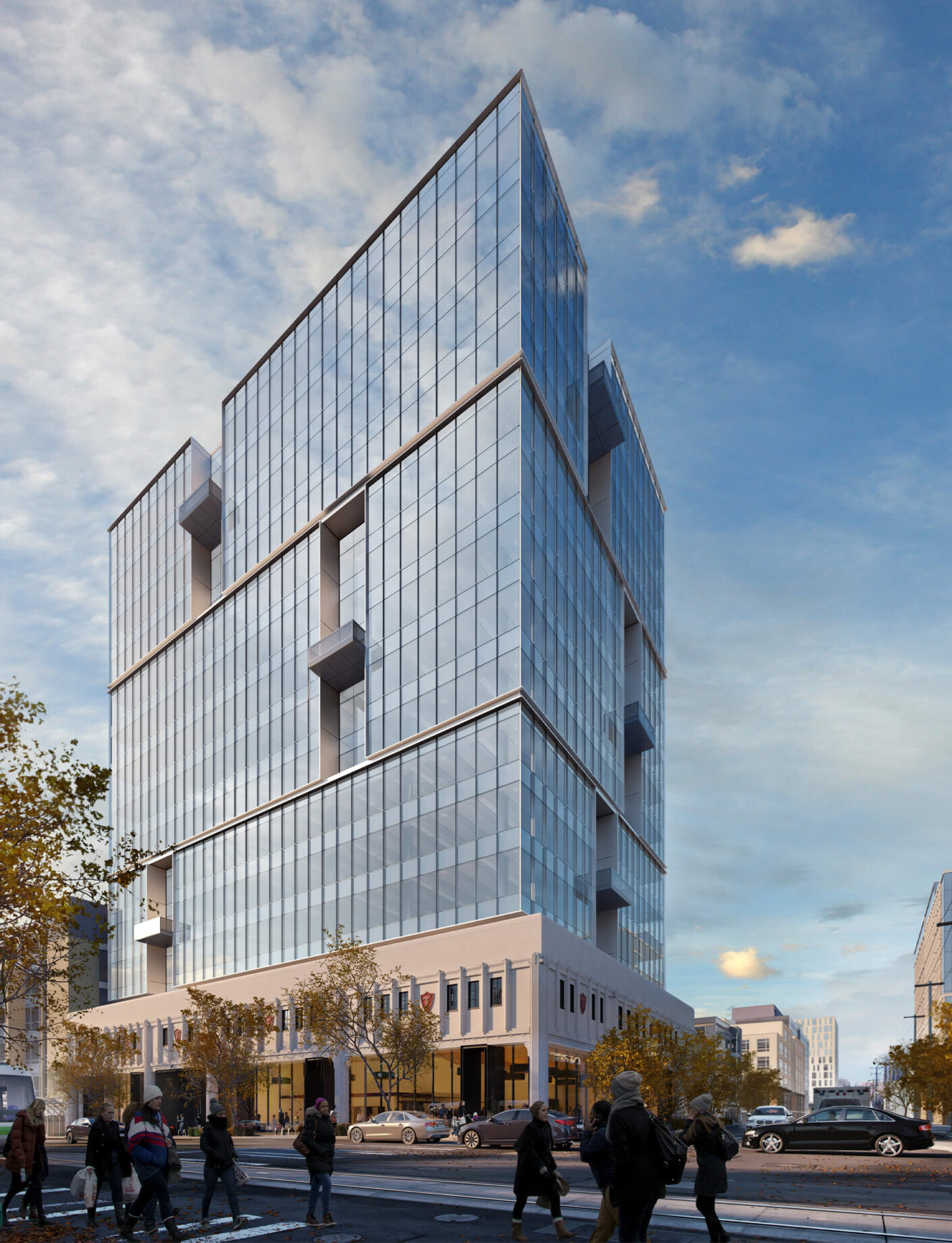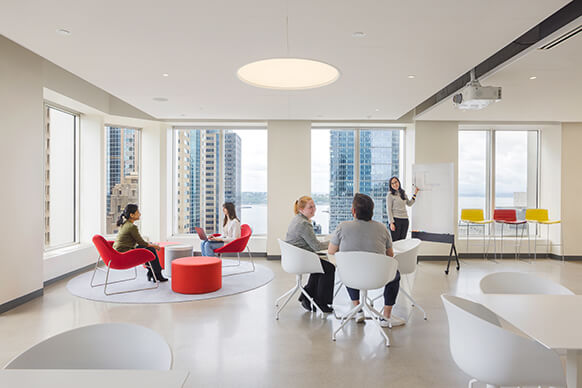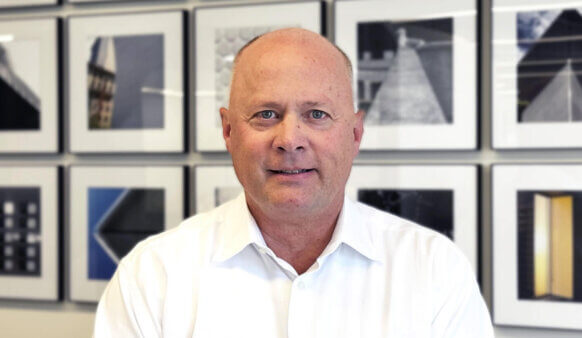Energy Generation
400 Westlake will be net positive, producing 105 percent of the building’s energy needs. Solar energy will be generated onsite by a Lumos Solar Canopy composed of photo-voltaic fins on the 15th-floor rooftop deck. The solar canopy boasts 12 percent transparency, allowing daylight to pass through space in between the solar cells, creating beautiful dappled light. Using a dual-sided glass, the reflected light will generate energy on the underside, while its thin profile will provide an interesting aesthetic element to the 3,500 square feet rooftop amenity. The solar panels will also protect the rooftop amenities from rain and provide year-round exposure to the expansive 270-degree views to Downtown and Lake Union. The project plans to maximize carbon reduction off-site as well, with a solar energy grid in Eastern Washington that’s almost five times the size of the rooftop canopy.
Resilience & Energy Storage
Power outages can destabilize an urban center, causing mass panic and uncertainty. 400 Westlake will be designed to withstand a potential power crisis, serving as a beacon of hope and support within the community. The building will be designed with enough battery storage capacity to power emergency lighting and refrigeration for up to one week!
Equipped to respond to climate change and emergencies by remaining functional during power outages, it will serve as a hub of resiliency for surrounding buildings in times of energy crisis.
Water Reuse
Americans now use 127 percent more water than they did in 1950! It’s more important than ever to implement strong water recapture and reuse practices, ensuring the generations to come have access to safe, clean drinking water in sustainable abundance.
400 Westlake has been designed to use only non-potable water for non-potable uses, employing a greywater and rainwater capture, reuse system for toilets and landscape irrigation. In addition to these measures, water usage at 400 Westlake will be cut by low-flow appliances and a chilled-beam HVAC system will further reduce the energy consumed.
Human Health and Wellness
The project has been engineered to exclude materials listed on the Living Building Challenge Red List. An accessible rooftop deck on the 15th floor includes a 1,500 square foot green roof and a glass awning with building integrated photovoltaics for occupants to get fresh air, access to nature and expansive views of Downtown and South Lake Union.
Pronounced Progress Made on the Exterior of the Original Firestone Building
Built in 1929, and first renovated in 1937, and then again in 1943, a clear objective for MSRE has been to preserve and enhance the existing landmarked building. Characteristic of the Art Deco style, the terracotta ornament located on the south and west sides of the building’s façade will be meticulously restored, in addition to the fluted piers, exterior windows, scalloped spandrel decorations and original embossed Firestone crests that adorn the outside of the property.
Over the last five months, MSRE has successfully scaffolded the historic three-story exterior of the building on the south and west sides. They are now carefully stripping and cleaning the exterior to expose the original blonde face of the 1930s terracotta. Partnering with architects that specialize in historic preservation, team members have removed seven layers of paint and are developing a new system to tie the terracotta back together, strengthening it to withstand weather damage for years to come.
Realizing their vision of making this space one of historical beauty and reverence, the first-floor entrance will celebrate modern modes of transit by prominently displaying the building’s commuter bicycles where Firestone automobiles were once on display.





